Online Resources for Mesopotamian
No Departamento de Arqueologia da Universidade de Cambridge, Reino Unido.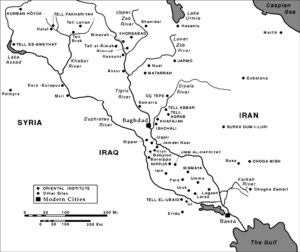
Blog sobre estudos acadêmicos da Bíblia
Online Resources for Mesopotamian
No Departamento de Arqueologia da Universidade de Cambridge, Reino Unido.
Dig Scene Investigators: What do archaeology specialists do? – By Nathan Steinmeyer: BAR – February 19, 2025
Hoje a arqueologia é bem mais especializada do que nos seus primeiros anos, com arqueólogos buscando responder a perguntas cada vez mais minuciosas e complexas. Mas o que são essas especializações e como elas afetam uma escavação? Para responder a essa pergunta, a BAR conversou com especialistas para perguntar o que eles fazem no campo.
Ceramistas
Uma das descobertas mais importantes em quase qualquer escavação arqueológica, a cerâmica nos conta muito sobre as pessoas que viveram ou passaram por um local. Ao fornecer informações sobre a cultura, a tecnologia e, especialmente, o lugar no tempo de uma sociedade, a cerâmica desempenha um papel fundamental na compreensão de um local desde o início. Com tantos tipos de cerâmica antiga, no entanto, os arqueólogos geralmente recorrem a especialistas para aprender mais sobre o que a cerâmica pode revelar sobre o passado.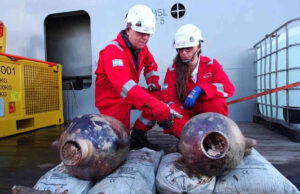
(…)
Zooarqueólogos
Exigindo ampla experiência em biologia animal, os zooarqueólogos são outros especialistas importantes em escavações. Ao analisar restos da fauna e seus contextos arqueológicos, esses especialistas ajudam a entender a relação entre povos antigos e o meio ambiente, seja investigando dietas antigas, domesticação animal ou práticas de pastoreio e caça.
(…)
Arqueólogos espaciais
Arqueólogos espaciais são especialistas em entender a topografia de sítios arqueológicos usando equipamentos tecnológicos como dispositivos GPS portáteis, níveis topográficos, estações totais, equipamentos RTK, drones e muito mais. Também é necessária experiência para transformar dados topográficos e espaciais em resultados significativos e apresentáveis. O avanço contínuo de equipamentos e softwares necessita de especialistas dedicados para atingir os resultados mais completos e precisos.
(…)
Geoarqueólogos marinhos
Semelhante à arqueologia espacial, a geoarqueologia marinha foca no contexto ambiental de sítios arqueológicos, mas, como o nome indica, debaixo d’água. Dadas as condições incrivelmente desafiadoras e específicas da arqueologia marítima, os geoarqueólogos utilizam ferramentas e técnicas de ponta para documentar adequadamente sítios e achados.
(…)
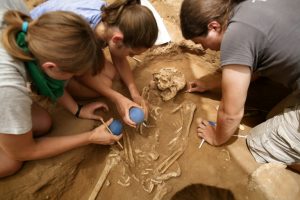 Conservadores
Conservadores
Apesar do que filmes como Indiana Jones podem sugerir, a arqueologia é muito mais do que caça ao tesouro, e um especialista importante nesse esforço é o conservador. Esses indivíduos altamente treinados, que geralmente têm formação em estudos de museus e ciências exatas, preservam objetos escavados para estudo e exibição no futuro e também trabalham para proteger o local e suas características após a conclusão da escavação.
(…)
Osteologistas
Semelhantes aos zooarqueólogos, os osteologistas trabalham com ossos, mas ossos humanos em vez de animais. Além de garantir que restos mortais e sepulturas humanas sejam manuseados de forma responsável, esses especialistas respondem a perguntas sobre como as pessoas viveram, morreram e foram enterradas com base em seus restos mortais. Da identificação de doenças antigas à análise de práticas de sepultamento, os osteologistas se especializam nos mínimos detalhes da existência humana cotidiana e da morte.
Leia, abaixo, o texto completo.
Since the early years of archaeology, the discipline has gradually become more specialized, with archaeologists seeking to answer ever more minute and complex questions. But what are these specializations and how do they affect an excavation? To answer this question, BAR caught up with specialists to ask them what they do in the field.
Ceramicists
One of the most important finds on nearly any archaeological dig, ceramics tell us a lot about the people who lived in or passed through a site. By providing information about a society’s culture, technology, and especially place in time, ceramics play a key role in understanding a site from the very start. With so many types of ancient pottery, however, archaeologists often turn to specialists to learn more about what ceramics can reveal about the past.
Nava Panitz-Cohen, Hebrew University of Jerusalem
“On a historical excavation, pottery is usually the most ubiquitous find. Since the sheer quantity can be daunting, the dig ceramic specialist has to classify and process the pottery in a way that will allow for ongoing research and analysis that will give the silent sherds a voice. Most of the work during the excavation itself is technical. First and foremost, an integral documentation and recording system in the field must be established that will allow for the secure reconstruction of the pottery’s context after it is excavated. After being washed, all the pottery that is collected in the field is sorted. The ceramic specialist then carefully examines all sherds, choosing which to keep. If the pottery is restorable, all sherds are kept. The results of sorting are recorded in an excavation database, so we know what was kept and what was discarded. In many instances, the pottery is the only indicator of the chronology and type of context. This stage of processing is critical for the ongoing research that will take place subsequently in the laboratory.”
Zooarchaeologists
Requiring extensive expertise in animal biology, zooarchaeologists are another key specialist in excavations. By analyzing faunal remains and their archaeological contexts, these specialists help to understand the relationship between ancient people and the environment, whether it is investigating ancient diets, animal domestication, or herding and hunting practices.
Abra Spiciarich, Ludwig Maximilian University of Munich
“Animal bones found in archaeological contexts are studied by zooarchaeologists to reconstruct past ways we interacted with animals. This varies from trying to uncover the beginning of domestication to using animals for rituals and feasts. To properly excavate bones, we use dental tools to carefully expose the entire skeleton, take lots of photos, make a top plan, and collect them with properly labeled bags or boxes, but never plastic bags because this creates moisture that will damage the remains. Once back in the lab, we create detailed spreadsheets recording what we can about the bones: element, side, species, completeness, age, and taphonomic evidence, like burn marks, cut marks, gnawing by scavengers, etc. We then take this dataset, apply statistical queries, and see what this tells us about how animals were used within specific contexts of a site.”
Lidar Sapir-Hen, Tel Aviv University
“My lab members and I collaborate with the excavation staff, from the time of planning, through the excavation, and following it. In the first stage of the work, we collaborate to understand the excavation aims and to design a protocol for the comprehensive retrieval of finds. During the excavation itself, our presence in the field is necessary. We direct the workers and students through the stages of retrieving and handling animal bones. Sometimes, our on-site input may change the course of an excavation. In addition, it is important for us to see and understand the context the finds were retrieved from, for subsequent analysis and interpretation. This collaboration continues into the post-excavation stage in the lab and includes a dialogue with all experts to formulate a comprehensive understanding of past human societies.”
Spatial Archaeologists
Spatial archaeologists specialize in understanding the topography of archaeological sites using technological equipment such as handheld GPS devices, dumpy levels, total stations, RTK equipment, drones, and more. Expertise is also required to turn topographic and spatial data into meaningful and presentable results. The continued advancement of equipment and software necessitates dedicated specialists to achieve the most complete and precise results.
Ido Wachtel, Hebrew University of Jerusalem
“Spatial archaeologist allows researchers to explore how ancient societies interacted with and adapted to their environments, as well as to uncover patterns, relationships, and hidden insights within archaeological data. At the regional level, systematic field surveys and spatial analysis form the cornerstone of our research, shedding light on the locations, sizes, and densities of human occupations and other different ways of human-landscape interactions. For example, archaeological predictive modeling enables us to predict the location of unknown archaeological sites and offers a comprehensive framework for protecting cultural heritage. At the site level, precise GPS and drone technologies have revolutionized site documentation.”
Marine Geoarchaeologists
Similar to spatial archaeology, marine geoarchaeology focuses on the environmental context of archaeological sites, but, as the name implies, underwater. Given the incredibly challenging and specific conditions of maritime archaeology, geoarchaeologists utilize cutting-edge tools and techniques to properly document sites and finds.
Isaac Ogloblin Ramirez, University of Haifa
“Documenting underwater archaeological contexts and collecting archaeological samples presents significant challenges due to diving limitations. Even under the best conditions, precisely documenting a stratigraphy sequence is nearly impossible due to the way colors change underwater. Given these conditions, the active involvement of geoarchaeologists during fieldwork is crucial for accurately documenting stratigraphic context and ensuring proper sample collection. This involvement helps prevent data misinterpretations resulting from improper sampling techniques. Following these intense underwater excursions, collected samples are transported to the laboratory for analysis, which aids in drawing conclusions about human behavior. The emerging field of underwater geoarchaeology is paving the way for innovative insights into humans and their aquatic environments.”
Conservators
Despite what movies like Indiana Jones may suggest, archaeology is about much more than treasure hunting, and an important specialist in this endeavor is the conservator. These highly trained individuals, who often have backgrounds in both museum studies and the hard sciences, preserve excavated objects for future study and display and also work to protect the site and its features after excavation is completed.
Orna Cohen
“As a conservator, I am involved in the process of digging and planning possible future development. While exposing structures, like walls and pillars, we must protect them until it is decided whether to dismantle or keep them. On the micro level, we glue cracked stones, restore stones to their original places, protect floors, and so on. When it comes to artifacts, it involves rescuing, strengthening, and packing them to be shipped to the laboratory where I will clean, consolidate, stabilize, restore, and treat them. During the excavation, we also plan the protection of the sites between the seasons with coverings, drainage, and fencing.”
Osteologists
Similar to zooarchaeologists, osteologists work with bones, but human bones rather than animal. In addition to making sure that human remains and graves are handled responsibly, these specialists answer questions about how people lived, died, and were buried based on their remains. From identifying ancient illnesses to analyzing burial practices, osteologists specialize in the minute details of everyday human existence and death.
Rachel Kalisher, Brown University
“As a bioarchaeologist, my primary responsibility is to handle human remains ethically and with the utmost respect. In that regard, I do my best to thoroughly document and report my findings. Prior to removing remains from the ground, I sketch each burial context, including accompanying artifacts and the location of the skeletal remains themselves. I note the body position and orientation and make any other notes that will be useful for interpretation. Bones are carefully removed and initially stored in paper bags, which ensures that the moisture from the adhering dirt dries out and does not produce mold. Once removed, the bones come straight to the laboratory where I remove dirt with wooden tools and brushes. I record the bones that are present, note any anomalies, and take photos and measurements when necessary.”
KAZEN, T. Dirt, Shame, Status: Perspectives on Same-Sex Sexuality in the Bible and the Ancient World. Grand Rapids, MI: Eerdmans, 2024, 224 p. -ISBN 9780802884343.
Um exame acadêmico da sexualidade entre pessoas do mesmo sexo na Bíblia no contexto do mundo antigo.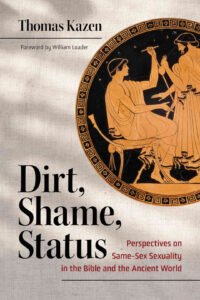
Proibições bíblicas de atos sexuais entre pessoas do mesmo sexo são frequentemente usadas como provas para apoiar a opressão das comunidades LGBT no ocidente hoje. No entanto, tal interpretação dessas escassas referências ignora o contexto sociohistórico crítico do mundo antigo.
Analisando uma riqueza de fontes primárias, Thomas Kazen traz estudos bíblicos para uma conversa com as normas e práticas sexuais do mundo antigo. Textos do antigo Oriente Médio, gregos e romanos, incluindo o Antigo e o Novo Testamento, exibem preocupações antigas sobre hierarquia em relacionamentos sexuais. Examinando referências à sexualidade através das lentes de poder e subordinação, honra e vergonha, e pureza, Kazen lança luz sobre passagens homofóbicas na Bíblia. Atenção especial é dada às leis levíticas e às epístolas paulinas. Por fim, Kazen nos chama a renegociar o equilíbrio entre nossa herança antiga e nossos valores contemporâneos.
Cuidadosamente pesquisado e apresentado de forma acessível, Dirt, Shame, Status oferece aos leitores uma visão sobre as diversas influências culturais na Bíblia. O trabalho de Kazen oferece uma perspectiva informada e importante sobre um tópico controverso de interesse perene. Acadêmicos, estudantes e todos os leitores curiosos das Escrituras acharão este volume um recurso indispensável para entender textos e contextos antigos complexos.
Thomas Kazen é professor e pesquisador na área de estudos bíblicos na Escola de Teologia de Estocolmo, University College Stockholm, Suécia. Ele é autor de vários livros e artigos em inglês e sueco.
A scholarly examination of same-sex sexuality in the Bible in the context of the ancient world.
Scriptural prohibitions of same-sex sexual acts (so-called “clobber passages”) are often used as prooftexts to support the oppression of LGBT communities in the West today. However, such interpretation of these scant references ignores critical sociohistorical context from the ancient world.
 Analyzing a wealth of primary sources, Thomas Kazen brings biblical studies into conversation with the sexual norms and practices of the ancient world. Near Eastern, Greek, and Roman texts, including the Old and New Testaments, exhibit ancient concerns about hierarchy in sexual relationships. Examining references to sexuality through the lenses of power and subordination, honor and shame, and purity, Kazen sheds light on homophobic passages in the Bible. Special attention is given to the Levitical laws and the Pauline epistles. Ultimately, Kazen calls us to renegotiate the balance between our ancient heritage and our contemporary values.
Analyzing a wealth of primary sources, Thomas Kazen brings biblical studies into conversation with the sexual norms and practices of the ancient world. Near Eastern, Greek, and Roman texts, including the Old and New Testaments, exhibit ancient concerns about hierarchy in sexual relationships. Examining references to sexuality through the lenses of power and subordination, honor and shame, and purity, Kazen sheds light on homophobic passages in the Bible. Special attention is given to the Levitical laws and the Pauline epistles. Ultimately, Kazen calls us to renegotiate the balance between our ancient heritage and our contemporary values.
Carefully researched and accessibly presented, Dirt, Shame, Status lends readers insight into the diverse cultural influences on the Bible. Kazen’s work offers an informed and important perspective on a controversial topic of perennial interest. Scholars, students, and all curious readers of Scripture will find this volume to be an indispensable resource for understanding complex ancient texts and contexts.
Thomas Kazen is professor and research chair of biblical studies at Stockholm School of Theology, University College Stockholm. He has authored numerous books and articles in English and Swedish, including Moral Infringement and Repair in Antiquity and Impurity and Purification in Early Judaism and the Jesus Tradition.
MAYFIELD, T. D.; BARTER, P. (eds.) Ezekiel’s Sign-Acts: Methods and Interpretation. Berlin: Walter de Gruyter, 2024, 240 p. – ISBN 9783111519739.
As passagens de Ezequiel que descrevem as instruções e a dramatização de mensagens divinas (Ezequiel 3-5; 12; 24; 37) estão entre as mais bizarras da Bíblia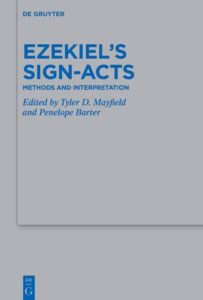 Hebraica. O profeta é ordenado a incorporar sua mensagem de julgamento a Jerusalém, e essas ações esclarecem os oráculos que elas cercam. No entanto, esses atos de sinais são frequentemente negligenciados nos estudos de Ezequiel, que tendem a se concentrar nas visões estranhas e nos oráculos controversos do livro. Este volume aborda a crescente diversidade de abordagens nos estudos de Ezequiel, convidando acadêmicos seniores e juniores internacionais a se concentrarem nos textos relativos às ações simbólicas de Ezequiel. Ele visa redirecionar a atenção acadêmica para esses textos frequentemente ignorados, que são tão centrais para a compreensão da natureza da profecia, bem como do livro de Ezequiel.
Hebraica. O profeta é ordenado a incorporar sua mensagem de julgamento a Jerusalém, e essas ações esclarecem os oráculos que elas cercam. No entanto, esses atos de sinais são frequentemente negligenciados nos estudos de Ezequiel, que tendem a se concentrar nas visões estranhas e nos oráculos controversos do livro. Este volume aborda a crescente diversidade de abordagens nos estudos de Ezequiel, convidando acadêmicos seniores e juniores internacionais a se concentrarem nos textos relativos às ações simbólicas de Ezequiel. Ele visa redirecionar a atenção acadêmica para esses textos frequentemente ignorados, que são tão centrais para a compreensão da natureza da profecia, bem como do livro de Ezequiel.
The Ezekiel passages describing the instructions for, and dramatization of, divine messages (Ezekiel 3-5; 12; 24; 37) are among the most bizarre in the Hebrew Bible. The prophet is commanded to embody his message of judgment to Jerusalem, and these actions clarify the oracles they surround. Yet, these sign-acts are frequently overlooked within Ezekiel studies, which tend to focus on the book’s strange visions and controversial oracles. This volume addresses the growing diversity in approaches in Ezekiel studies by inviting international senior and junior scholars to focus on the texts concerning Ezekiel’s sign-acts. It aims to redirect scholarly attention to these often-ignored texts, which stand so central to understanding the nature of prophecy as well as the overall book of Ezekiel.
Tyler D. Mayfield, Lousville, KY, USA, and Penelope Barter, Amsterdam, The Netherlands.
VITA, J.-P. (ed.) History of the Akkadian Language (2 Vols). Leiden: Brill, 2021, 1692 p. – ISBN 9789004445208.
O acádio é, depois do sumério, a língua mais antiga atestada na Mesopotâmia, bem como a mais antiga língua semítica conhecida. É também uma língua com um dos registros escritos mais longos da história. E, no entanto, diferentemente de outras línguas relevantes escritas ao longo de um grande período de tempo, não houve nenhum volume dedicado à sua própria história. O objetivo do presente trabalho é preencher esse vazio. Como ele cresceu para abraçar tantas facetas do acádio, e alguns de seus capítulos são tão extensos, o trabalho é dividido em dois volumes, o primeiro cobrindo as partes 1–4 (Contexto linguístico e períodos iniciais), o segundo cobrindo as partes 5–8 (O segundo e o primeiro milênios a.C. Vida após a morte).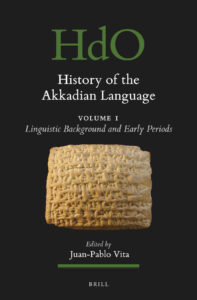
Um trabalho desse tipo só poderia ser um esforço coletivo. O resultado é apresentado em 26 capítulos escritos por 25 autores. É, portanto, um trabalho com uma gestação longa e complexa. Os autores receberam apenas uma sugestão geral de que, na medida do possível, seus capítulos não deveriam se limitar aos aspectos gramaticais da língua, mas também deveriam levar em conta seu contexto histórico e cultural.
Veja o sumário do livro e informações sobre os autores, em pdf, clicando aqui.
Juan-Pablo Vita é pesquisador do CSIC (Consejo Superior de Investigaciones Científicas) em Madri. Ele trabalha com línguas semíticas do noroeste (especialmente ugarítico) e acádio (em particular dialetos acádios periféricos), contato linguístico e história social e econômica da Síria e Canaã na Idade Recente do Bronze. Ele também é epigrafista da Mission archéologique syro-française de Ras Shamra-Ougarit.
Akkadian is, after Sumerian, the second oldest language attested in the Ancient Near East, as well as the oldest known Semitic language. It is also a language with one of history’s longest written records. And yet, unlike other relevant languages written over a long period of time, there has been no volume dedicated to its own history. The aim of the present work is to fill that void. Because it grew to embrace so many facets of Akkadian, and some of its chapters are so extensive, the work is divided into two volumes, the first covering parts 1–4 (Linguistic Background and Early Periods), the second covering parts 5–8 (The Second and First Millennia bce. Afterlife).
 A work of this type could only be a collective endeavor. The outcome is presented in 26 chapters written by 25 authors. It is, therefore, a work with a long and complex gestation. The authors were given only a general suggestion that, as far as possible, their chapters should not be limited to the grammatical aspects of the language, but should also take into account its historical and cultural background.
A work of this type could only be a collective endeavor. The outcome is presented in 26 chapters written by 25 authors. It is, therefore, a work with a long and complex gestation. The authors were given only a general suggestion that, as far as possible, their chapters should not be limited to the grammatical aspects of the language, but should also take into account its historical and cultural background.
Juan-Pablo Vita is a researcher at the Spanish National Research Council (csic) in Madrid. He works on Northwest Semitic languages (especially Ugaritic) and Akkadian (in particular peripheral Akkadian dialects), language contact, and the social and economic history of Syria and Canaan in the Late Bronze Age. He is also epigraphist of the Mission archéologique syro-française de Ras Shamra-Ougarit.
SCHMID, K. The Scribes of the Torah: The Formation of the Pentateuch in Its Literary and Historical Contexts. Atlanta: SBL Press, 2023, 954 p. – ISBN 9781628374315.
Disponível para download gratuito no Projeto ICI da SBL.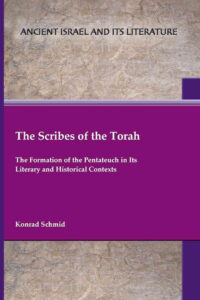
Esta coleção de trinta e um estudos sobre o Pentateuco representa mais de vinte anos de pesquisa e publicações de Konrad Schmid defendendo uma nova visão da formação do Pentateuco. Os ensaios são divididos em oito seções utilmente estruturadas em torno dos temas do Pentateuco, a história da pesquisa, a formação da Torá, Gênesis, a história de Moisés, o documento sacerdotal, textos legais e o Pentateuco na história da religião do antigo Israel.
Quem eram os escribas da Torá? Quando eles escreveram partes específicas da Torá? Quando, como e por que a Torá foi composta? Possíveis respostas a essas perguntas pareciam mais claras e mais prontamente disponíveis várias décadas atrás. Isso, no entanto, não significa que hoje sabemos menos sobre a escrita e composição da Torá do que no final do século XX. Em uma escala global, agora estamos mais cientes das deficiências e falácias do consenso que existia na pesquisa de Wellhausen a Rendtorff e de Hupfeld a Van Seters. A modificação e possivelmente até mesmo o abandono de pressupostos tradicionais nos estudos do Pentateuco não podem ser seriamente considerados como uma crise na pesquisa. Em vez disso, novas perspectivas abrem caminho para considerações mais precisas e mais bem fundamentadas sobre os escribas da Torá e seu trabalho. Isso permite, portanto, uma melhor reconstrução da estrutura histórica da gênese do Pentateuco.
Konrad Schmid é Professor de Bíblia Hebraica e Judaísmo Antigo na Universidade de Zurique, Suíça. A história literária do Pentateuco e a reconstrução dos processos redacionais que levaram à sua forma final constituem o foco principal de sua pesquisa. Ele é filho de Hans Heinrich Schmid, um dos três “revisionistas” do Pentateuco.
This collection of thirty-one studies on the Pentateuch represents more than twenty years of Konrad Schmid’s research and publications advocating for a new view of the Pentateuch’s formation. The essays are divided into eight sections usefully structured around the themes of the Pentateuch in the Enneateuch, the history of scholarship, the formation of the Torah, Genesis, the Moses story, the Priestly document, legal texts, and the Pentateuch in the history of ancient Israel’s religion.
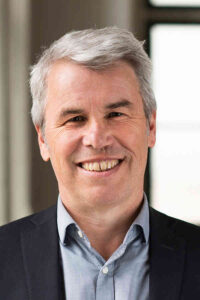 Who were the scribes of the Torah? When did they write specific parts of the Torah? When, how, and why was the Torah composed? Possible answers to these questions seemed clearer and more readily available several decades ago. This, however, does not mean that we know less regarding the writing and composition of the Torah than at the end of the twentieth century. On a global scale, now we are more aware of the shortcomings and fallacies of the assumed consensus that reigned in pentateuchal scholarship from Wellhausen to Rendtorff and from Hupfeld to Van Seters. The modification and possibly even the abandonment of traditional assumptions in scholarship cannot be seriously considered as a dominant backdrop of pentateuchal research. Rather, it paves the way to more accurate and better-founded assumptions regarding the scribes of the Torah and their work. It thereby enables a better reconstruction of the historical framework of the Pentateuch’s genesis.
Who were the scribes of the Torah? When did they write specific parts of the Torah? When, how, and why was the Torah composed? Possible answers to these questions seemed clearer and more readily available several decades ago. This, however, does not mean that we know less regarding the writing and composition of the Torah than at the end of the twentieth century. On a global scale, now we are more aware of the shortcomings and fallacies of the assumed consensus that reigned in pentateuchal scholarship from Wellhausen to Rendtorff and from Hupfeld to Van Seters. The modification and possibly even the abandonment of traditional assumptions in scholarship cannot be seriously considered as a dominant backdrop of pentateuchal research. Rather, it paves the way to more accurate and better-founded assumptions regarding the scribes of the Torah and their work. It thereby enables a better reconstruction of the historical framework of the Pentateuch’s genesis.
Konrad Schmid is Professor of the Hebrew Bible and Ancient Judaism at the University of Zurich. The literary history of the Pentateuch and the reconstruction of the redactional processes that led to its final shape constitute the main focus of his research. Konrad Schmid is the son of the Old Testament professor Hans Heinrich Schmid (1937–2014), who also taught at the Universität Zürich.
Seleção de postagens dos biblioblogs em janeiro de 2025.
Biblical Studies Carnival #224 for January 2025
Trabalho feito por Reuven Chaim Klein em seu blog The Rachack Review.